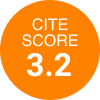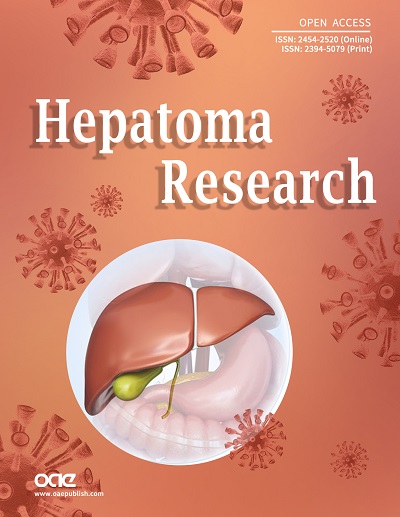
Topic: Update on Prognostic Markers for HBV-Related HCC
A Special Issue of Hepatoma Research
ISSN 2454-2520 (Online) 2394-5079 (Print)
Submission deadline: 15 Dec 2024
Guest Editor(s)
Special Issue Introduction
Hepatitis B virus (HBV) infection places a significant burden on global health, causing chronic liver disease in nearly 300 million people worldwide. This can lead to fibrosis, cirrhosis, hepatocellular carcinoma (HCC), and even death, with around 1 million lives lost each year, mainly in low- and middle-income countries. For people living with chronic HBV infection (CHB), nucleoside analog treatment is highly effective in delaying cirrhosis progression, reducing the incidence of HCC, and improving long-term survival. However, significant gaps in testing and treatment persist. Radically simplifying treatment criteria through tailored prognostic scores based on standard biological tests and addressing barriers to HBV testing and CHB treatment across the care continuum may help reach the WHO’s goal of eliminating HBV by 2030. Assays that detect or measure serum levels of HBV surface antigen (HBsAg), HBV surface antibody, HBeAg, and anti-HBc are used to identify patients exposed to HBV. Other tests provide information on the level of virus replication, the presence of specific variants, and even hepatitis D virus coinfection. In hard-to-access populations, noninvasive point-of-care tests or scores have been developed to detect HBV infection, assess liver disease stages, and establish cut-off thresholds for diagnosing significant fibrosis or cirrhosis, especially in resource-limited settings. Newer biomarker tests, such as those for covalently closed circular DNA (cccDNA) or HBV RNA - currently used only in research settings- aim to quantify intrahepatic HBV replication, monitor disease progression, and assess therapy responses. These biomarkers might also be used in clinical trials of agents designed to cure CHB, defined as the sustained loss of HBsAg from serum, the elimination of HBV DNA from serum and liver, and the loss of cccDNA.
Potential topics include, but are not limited to, the following:
1. Routine tests in Clinical Practice;
2. EASL criteria for antiviral treatment eligibility: what is new?
3. HBV DNA Quantification: How useful is it?
4. Point-of-Care Imaging test (FibroScan?);
5. HBe Antigen in CHB: a pivotal indicator?
6. Prognostic scores (TREAT-B, HEPSANET, PAGE-B, PIVKA II);
7. Advancements in Alpha-Fetoprotein Research in 2024;
8. Point-of-Care and Dried Blood Spot Tests for HBV detection;
9. HBe antigen and precore/basal core mutations;
10. The impact of HBV Genotypes on disease progression;
11. Quantification of HBV surface antigen and its implications for treatment;
12. Quantification of Hepatitis B Surface Antigen and Disease Progression;
13. cccDNA and its surrogates;
14. Measurement of serum HBV RNA: what does it reveal?
15. The clinical utility of HBcrAg measurement in HBV management.
Potential topics include, but are not limited to, the following:
1. Routine tests in Clinical Practice;
2. EASL criteria for antiviral treatment eligibility: what is new?
3. HBV DNA Quantification: How useful is it?
4. Point-of-Care Imaging test (FibroScan?);
5. HBe Antigen in CHB: a pivotal indicator?
6. Prognostic scores (TREAT-B, HEPSANET, PAGE-B, PIVKA II);
7. Advancements in Alpha-Fetoprotein Research in 2024;
8. Point-of-Care and Dried Blood Spot Tests for HBV detection;
9. HBe antigen and precore/basal core mutations;
10. The impact of HBV Genotypes on disease progression;
11. Quantification of HBV surface antigen and its implications for treatment;
12. Quantification of Hepatitis B Surface Antigen and Disease Progression;
13. cccDNA and its surrogates;
14. Measurement of serum HBV RNA: what does it reveal?
15. The clinical utility of HBcrAg measurement in HBV management.
Submission Deadline
15 Dec 2024
Submission Information
For Author Instructions, please refer to https://www.oaepublish.com/hr/author_instructions
For Online Submission, please login at https://oaemesas.com/login?JournalId=hr&SpecialIssueId=hr240820
Submission Deadline: 15 Dec 2024
Contacts: Ada Zhong, Assistant Editor, editor_ada@hrjournal.net








